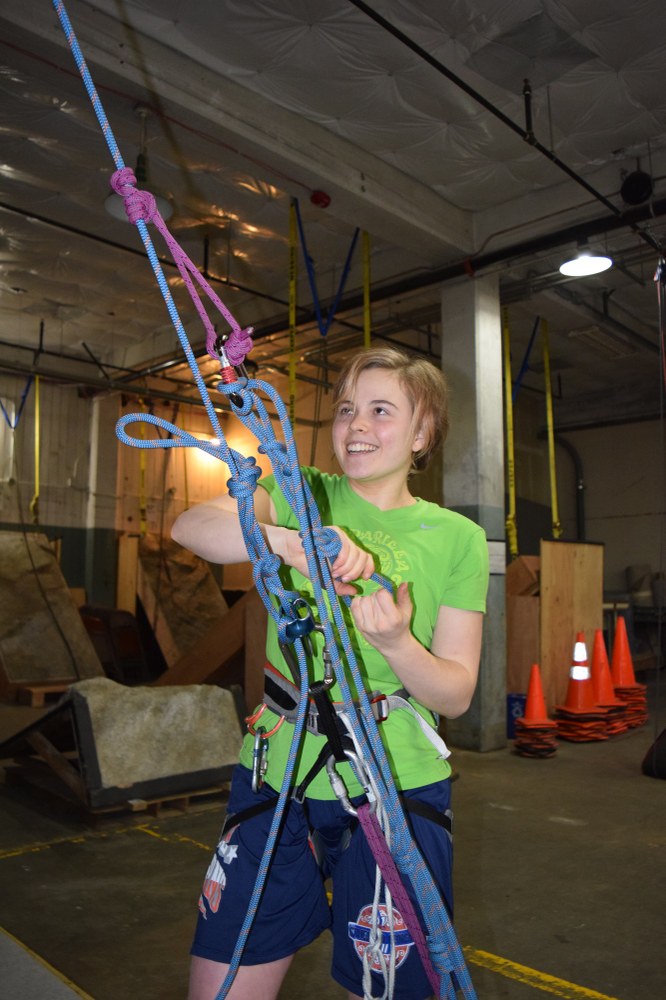
If a climbing partner is seriously injured, and there are limited resources to get help, it may be necessary to tie off the climbing rope to remove yourself from the belay system, so you can investigate, help your partner, or go for help.
In escaping the belay, you eventually want to have the load connected directly to the anchor. If you are belaying directly off the anchor using a munter hitch, you need only prevent the rope from sliding through the belay. Tie off the munter hitch with a mule knot and back it up with an overhand knot. You can now take the braking hand off the rope and the load will be held. Then back up the munter-mule to the anchor with a figure eight on a bight, which is connected to the anchor with a carabiner. Leave just enough slack in this backup to disassemble the belay later on.
If you are using a belay device or munter hitch attached to your seat harness, the first step is to tie off the belay with a mule knot backed up with an overhand knot. The load is now on the belayer's harness, and the belayer's hands are both free. Now attach a cord tie-off loop to the climber's end of the rope with a prusik hitch, and connect this loop to a locking carabiner. Attach this locking carabiner to the loose rope coming from the belayer tie-in at the anchor; connect the carabiner and rope with a munter hitch, tied off with a mule knot and backed up with an overhand knot. Untie the first overhand backup and mule knot from the belay setup on the harness, and slowly transfer the load to the tie-off loop using the belay device. Finally, connect the rope to the anchor with a figure eight on a bight as a backup, leaving just enough slack to disassemble the belay, and disconnect the belay device from the system.
 Becca Polglase
Becca Polglase
